
Fecske-torony
¥63.03
I shall be grateful to any Reader of this book who will point out any mistakes or misprints he may happen to notice in it, or any passage which he thinks is not clearly expressed. I have a quantity of MS. in hand for Parts II and III, and hope to be able——should life, and health, and opportunity, be granted to me, to publish them in the course of the next few years. Their contents will be as follows:— PART II. ADVANCED.Further investigations in the subjects of Part I. Propositions of other forms (such as “Not-all x are y”). Triliteral and Multiliteral Propositions (such as “All abc are de”). Hypotheticals. Dilemmas. &c. &c. Part III. TRANSCENDENTAL.Analysis of a Proposition into its Elements. Numerical and Geometrical Problems. The Theory of Inference. The Construction of Problems. And many other Curiosa Logica. Introduction TO LEARNERS.[N.B. Some remarks, addressed to Teachers, will be found in the Appendix]The Learner, who wishes to try the question fairly, whether this little book does, or does not, supply the materials for a most interesting mental recreation, is earnestly advised to adopt the following Rules:— (1) Begin at the beginning, and do not allow yourself to gratify a mere idle curiosity by dipping into the book, here and there. This would very likely lead to your throwing it aside, with the remark “This is much too hard for me!”, and thus losing the chance of adding a very large item to your stock of mental delights. This Rule (of not dipping) is very desirable with other kinds of books——such as novels, for instance, where you may easily spoil much of the enjoyment you would otherwise get from the story, by dipping into it further on, so that what the author meant to be a pleasant surprise comes to you as a matter of course. Some people, I know, make a practice of looking into Vol. III first, just to see how the story ends: and perhaps it is as well just to know that all ends happily——that the much-persecuted lovers do marry after all, that he is proved to be quite innocent of the murder, that the wicked cousin is completely foiled in his plot and gets the punishment he deserves, and that the rich uncle in India (Qu. Why in India? Ans. Because, somehow, uncles never can get rich anywhere else) dies at exactly the right moment——before taking the trouble to read Vol. I. This, I say, is just permissible with a novel, where Vol. III has a meaning, even for those who have not read the earlier part of the story; but, with a scientific book, it is sheer insanity: you will find the latter part hopelessly unintelligible, if you read it before reaching it in regular course. (2) Don’t begin any fresh Chapter, or Section, until you are certain that you thoroughly understand the whole book up to that point, and that you have worked, correctly, most if not all of the examples which have been set. So long as you are conscious that all the land you have passed through is absolutely conquered, and that you are leaving no unsolved difficulties behind you, which will be sure to turn up again later on, your triumphal progress will be easy and delightful. Otherwise, you will find your state of puzzlement get worse and worse as you proceed, till you give up the whole thing in utter disgust. (3) When you come to any passage you don’t understand, read it again: if you still don’t understand it, read it again: if you fail, even after three readings, very likely your brain is getting a little tired. In that case, put the book away, and take to other occupations, and next day, when you come to it fresh, you will very likely find that it is quite easy.(4) If possible, find some genial friend, who will read the book along with you, and will talk over the difficulties with you. Talking is a wonderful smoother-over of difficulties. When I come upon anything——in Logic or in any other hard subject——that entirely puzzles me, I find it a capital plan to talk it over, aloud. ? ? ? ? ? L. C.29, Bedford Street, Strand. February 21, 1896.

Bosszú: A harag ébredése
¥52.48
Az egészségügyi szakemberek fontos feladata a kliensekkel folytatott beszélgetés. A diagnózis felállításán túl a terápia megbeszélése, valamint a megel?zésr?l szóló tájékoztatás is hozzájárul a hatékony gyógyításhoz. A korszer?, bizonyíték-alapú gyógyításban az egészségügyi szakember-kliens diskurzusok tanulmányozása megkerülhetetlen részét képezik az egészségtudományi kutatásoknak, hiszen a róluk készített részletes, módszeres és mélységi elemzések kiegészítik a statisztikai tényeken alapuló megk?zelítéseket. A k?nyv egészségügyi szakemberek és hallgatók-orvosok, ápolók, szülészn?k, gyógytornászok, dietetikusok- számára nyújt áttekint? képet a kvalitatív elemzések fajtáiról, módszereir?l és technikáiról, hogy segítséget nyújtson a kutatások megválasztásában, kidolgozásában és publikálásában. A szerz? mind a kézi, mind a számítógépes adatfeldolgozási módszereket példákon keresztül mutatja be, valamint a kül?nb?z? diskurzus-elemzési módszereket magyar k?zleményekb?l vett szemelvények segítségével illusztrálja. A glosszárium jelent?s segítséget nyújt a filozófiai és nyelvészeti kifejezések megértésében. A k?nyv használható kutatásmódszertani segédk?nyvként, de ?nállóan, egy kurzus részeként is alkalmazható.

A Bundakirály
¥68.83
Более 100 разнообразных диет ? Безопасные способы похудения ? Советы по питанию и подбору диеты ? Наглядные таблицы с меню Избавиться от лишних килограммов – это просто! Важно лишь правильно подобрать диету, подходящую именно вам, – и результат не заставит себя ждать. Вы будете худеть, великолепно выглядеть и прекрасно себя чувствовать! В этой книге собрано множество вариантов традиционных и современных диет, правила и секреты оптимального питания, которые позволят стройнеть без особых усилий и закрепить полученные результаты. Диета для ленивых, кальциевая, рисовая, безуглеводная диеты, гречневая, кефирная, голливудская, кремлевская, средиземноморская диеты, диеты Аткинса, Дюкана и другие – выбирайте свой вариант! Наглядные и удобные таблицы с меню для каждой диеты сделают процесс похудения еще менее хлопотным! Bolee 100 raznoobraznyh diet ? Bezopasnye sposoby pohudenija ? Sovety po pitaniju i podboru diety ? Nagljadnye tablicy s menju Izbavit'sja ot lishnih kilogrammov – jeto prosto! Vazhno lish' pravil'no podobrat' dietu, podhodjashhuju imenno vam, – i rezul'tat ne zastavit sebja zhdat'. Vy budete hudet', velikolepno vygljadet' i prekrasno sebja chuvstvovat'! V jetoj knige sobrano mnozhestvo variantov tradicionnyh i sovremennyh diet, pravila i sekrety optimal'nogo pitanija, kotorye pozvoljat strojnet' bez osobyh usilij i zakrepit' poluchennye rezul'taty. Dieta dlja lenivyh, kal'cievaja, risovaja, bezuglevodnaja diety, grechnevaja, kefirnaja, gollivudskaja, kremlevskaja, sredizemnomorskaja diety, diety Atkinsa, Djukana i drugie – vybirajte svoj variant! Nagljadnye i udobnye tablicy s menju dlja kazhdoj diety sdelajut process pohudenija eshhe menee hlopotnym!

Szív-hangok 2.: Nem csak egy év
¥34.58
Проверенные веками рецепты целителей! ? Рецепты отваров, настоев, мазей из целебных трав ? Лечение недугов медом, глиной, яблочным уксусом, луком, чесноком ? Исцеление словом: заговоры и шепотки от болезней Народные знахари бережно хранят древние секреты лечения недугов, укрепления душевных сил и оздоровления всего организма. Сегодня эти секреты откроются вам. Благодаря лечебнику с огромным количеством народных способов исцеления травами, чистой водой, ягодами, медом, глиной и другими дарами природы, а также заговорам от сглаза, всякой напасти, злых слов и порчи, различных недугов вы избавитесь от:? простудных и воспалительных заболеваний ? болезней сердца, желудка, суставов ? головных болей, повышенного давления ? аллергии и болезней обмена веществ.Proverennye vekami recepty celitelej! ? Recepty otvarov, nastoev, mazej iz celebnyh trav ? Lechenie nedugov medom, glinoj, jablochnym uksusom, lukom, chesnokom ? Iscelenie slovom: zagovory i shepotki ot boleznej Narodnye znahari berezhno hranjat drevnie sekrety lechenija nedugov, ukreplenija dushevnyh sil i ozdorovlenija vsego organizma. Segodnja jeti sekrety otkrojutsja vam. Blagodarja lechebniku s ogromnym kolichestvom narodnyh sposobov iscelenija travami, chistoj vodoj, jagodami, medom, glinoj i drugimi darami prirody, a takzhe zagovoram ot sglaza, vsjakoj napasti, zlyh slov i porchi, razlichnyh nedugov vy izbavites' ot:? prostudnyh i vospalitel'nyh zabolevanij ? boleznej serdca, zheludka, sustavov ? golovnyh bolej, povyshennogo davlenija ? allergii i boleznej obmena veshhestv.

М?сто к?сток (M?sto k?stok)
¥26.65
Отдалить возрастные изменения остроты зрения и помочь нашим глазам в любом возрасте противостоять огромным нагрузкам, без которых невозможна, к сожалению, современная жизнь, помогут давно проверенные рецепты народной медицины. Рецепты вкусных и полезных блюд для ежедневной диеты, богатой жирными кислотами, аминокислотами, каротиноидами и витаминами, а также комплексы лечебной гимнастики и массажей при косоглазии, близорукости и дальнозоркости, астигматизме, рецепты фитотерапии для внутреннего и наружного применения, процедуры и упражнения для снятия напряжения при переутомлении глаз, советы для тех, кто много работает за компьютером и всех, кто заботится о своих глазах, помогут сделать эту заботу всесторонней, не тягостной и эффективной.Otdalit' vozrastnye izmenenija ostroty zrenija i pomoch' nashim glazam v ljubom vozraste protivostojat' ogromnym nagruzkam, bez kotoryh nevozmozhna, k sozhaleniju, sovremennaja zhizn', pomogut davno proverennye recepty narodnoj mediciny. Recepty vkusnyh i poleznyh bljud dlja ezhednevnoj diety, bogatoj zhirnymi kislotami, aminokislotami, karotinoidami i vitaminami, a takzhe kompleksy lechebnoj gimnastiki i massazhej pri kosoglazii, blizorukosti i dal'nozorkosti, astigmatizme, recepty fitoterapii dlja vnutrennego i naruzhnogo primenenija, procedury i uprazhnenija dlja snjatija naprjazhenija pri pereutomlenii glaz, sovety dlja teh, kto mnogo rabotaet za komp'juterom i vseh, kto zabotitsja o svoih glazah, pomogut sdelat' jetu zabotu vsestoronnej, ne tjagostnoj i jeffektivnoj.
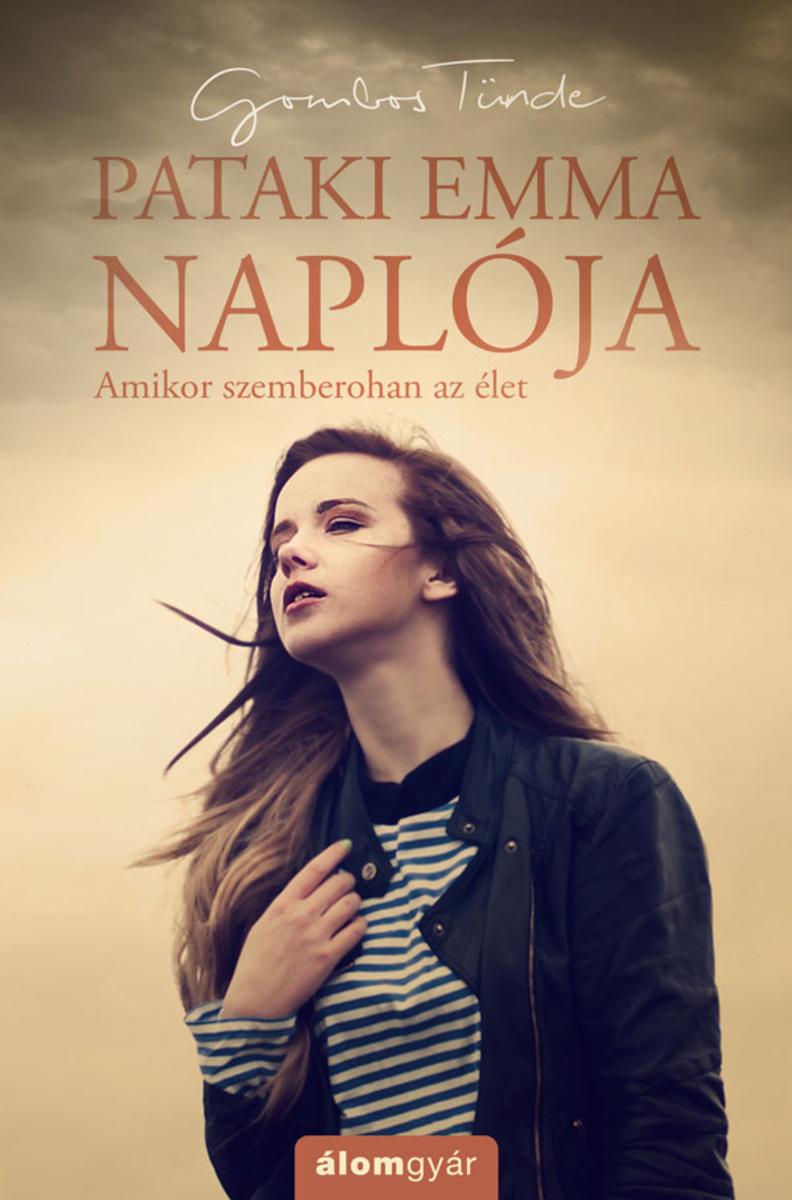
Pataki Emma naplója
¥58.29
Восстановление зрения без вмешательства врачей! Здесь детально описаны самые действенные методики улучшения зрения Э. Аветисова, М. Норбекова, П. Брэгга, У. Бейтса. Книга расскажет, как избавиться от проблем со зрением, а тесты позволят выявить различные заболевания глаз на ранней стадии. Также вы узнаете о проверенных веками способах восстановления зрения с помощью йоги, аюрведы, цигуна и др. Средства народной медицины, упражнения и рекомендации по лечебному питанию помогут излечить глаукому, катаракту и др. Vosstanovlenie zrenija bez vmeshatel'stva vrachej! Zdes' detal'no opisany samye dejstvennye metodiki uluchshenija zrenija Je. Avetisova, M. Norbekova, P. Brjegga, U. Bejtsa. Kniga rasskazhet, kak izbavit'sja ot problem so zreniem, a testy pozvoljat vyjavit' razlichnye zabolevanija glaz na rannej stadii. Takzhe vy uznaete o proverennyh vekami sposobah vosstanovlenija zrenija s pomoshh'ju jogi, ajurvedy, ciguna i dr. Sredstva narodnoj mediciny, uprazhnenija i rekomendacii po lechebnomu pitaniju pomogut izlechit' glaukomu, kataraktu i dr.

Anna Karenina: Illustrated
¥32.62
Hugh de Payens returns to Palestine—His death—Robert de Craon made Master—The second Crusade—The Templars assume the Red Cross—Lands, manors, and churches granted them in England—Bernard de Tremelay made Master—He is slain by the Infidels—Bertrand de Blanquefort made Master—He is taken prisoner, and sent in chains to Aleppo—the Pope confers vast privileges upon the Templars; —The knights, priests, and serving brethren of the order—Their religious and military enthusiasm—Their war banner called Beauseant—Rise of the rival religio-military order of the Hospital of St. John—Contests between Saladin and the Templars—Imprisonment and death of the Grand Master—The new Master and the Patriarch go to England for succour—Consecration of the Temple church at London. “We heard the tecbir, so the Arabs call Their shout of onset, when with loud appeal They challenge heaven, as if commanding conquest.” Hugh de Payens, having now laid in Europe the foundations of the great monastic and military institution of the Temple, which was destined shortly to spread its ramifications to the remotest quarters of Christendom, returned to Palestine at the head of a valiant band of newly-elected Templars, drawn principally from England and France. On their arrival at Jerusalem they were received with great distinction by the king, the clergy, and the barons of the Latin kingdom. Hugh de Payens died, however, shortly after his return, and was succeeded (A. D. 1136) by the Lord Robert, surnamed the Burgundian, (son-in-law of Anselm, Archbishop of Canterbury,) who, after the death of his wife, had taken the vows and the habit of the Templars.[6] At this period the fierce religious and military enthusiasm of the Mussulmen had been again aroused by the warlike Zinghis, and his son Noureddin, two of the most famous chieftains of the age. The one was named Emod-ed-deen, “Pillar of religion;” and the other Nour-ed-deen, “Light of Religion,” vulgarly, Noureddin. The Templars were worsted by overpowering numbers. The latin kingdom of Jerusalem was shaken to its foundations, and the oriental clergy in trepidation and alarm sent urgent letters to the Pope for assistance. The Lord Robert, Master of the Temple, had at this period (A. D. 1146) been succeeded by Everard des Barres, Prior of France, who convened a general chapter of the order at Paris, which was attended by Pope Eugenius the Third, Louis the Seventh, king of France, and many prelates, princes, and nobles, from all parts of Christendom. The second crusade was there arranged, and the Templars, with the sanction of the Pope, assumed the blood-red cross, the symbol of martyrdom, as the distinguishing badge of the order, which was appointed to be worn on their habits and mantles on the left side of the breast over the heart, whence they came afterwards to be known by the name of the Red Friars and the Red Cross Knights. At this famous assembly various donations were made to the Templars, to enable them to provide more effectually for the defence of the Holy Land. Bernard Baliol, through love of God and for the good of his soul, granted them his estate of Wedelee, in Hertfordshire, which afterwards formed part of the preceptory of Temple Dynnesley. This grant is expressed to be made at the chapter held at Easter, in Paris, in the presence of the Pope, the king of France, several archbishops, and one hundred and thirty Knights Templars clad in white mantles. The long Latin and French extracts from the old chronicles have also been discarded from the notes, but the historical references have been preserved to enable the reader, if he thinks fit, to study the quaint and curious language of the originals. By these means, and by enlarging the size of the page, the work has been compressed into a smaller compass, and the price reduced nearly one half. It is hoped that these alterations will be found to be improvements.
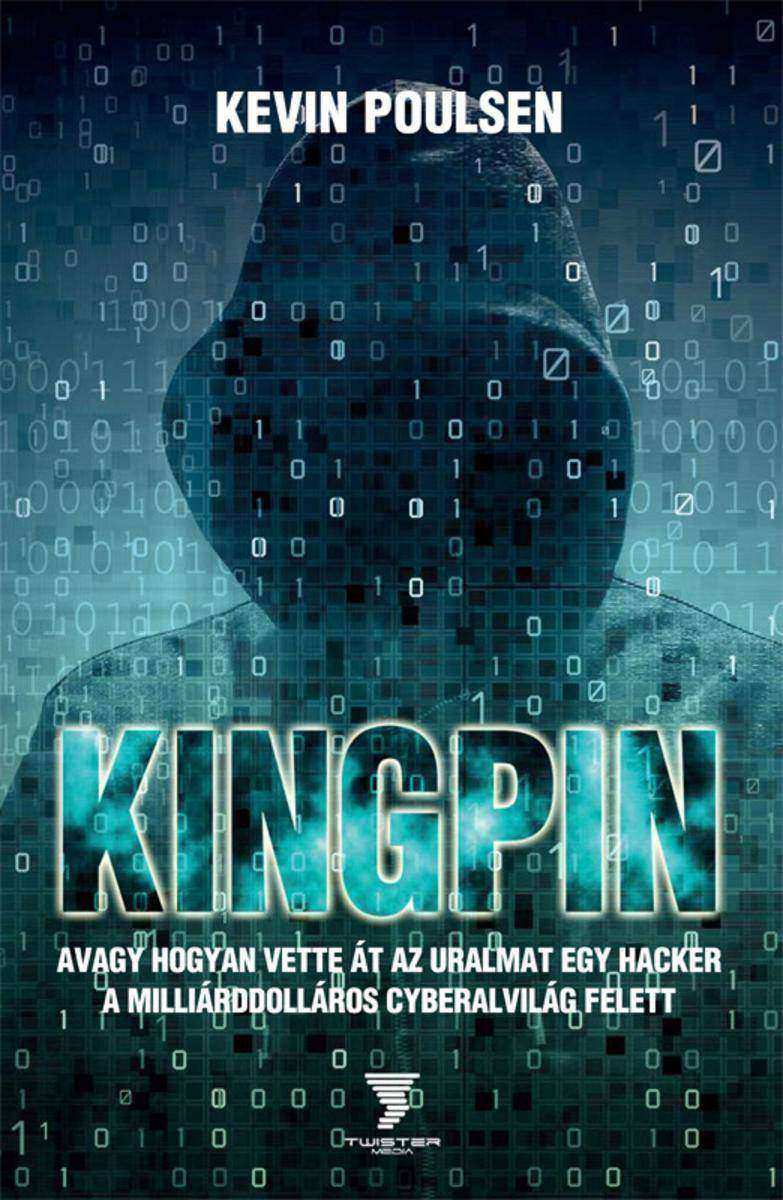
Kingpin - avagy hogyan vette át az uralmat egy hacker a milliárddolláros cyberal
¥57.14
Основные принципы лечебного питания и советы по подбору продуктов Рецепты вкусных блюд, эффективных в борьбе с болезнями Очень часто мы полагаемся на таблетки и лекарства, хотя действенные и полезные средства от недугов всегда под рукой! Рецепты блюд, приведенные в книге, позволят вам отказаться от большинства медикаментов. Блюда содержат множество целебных веществ и помогут не только поддержать здоровье, но и излечить подагру и диабет, болезни сердца и сосудов, суставов и позвоночника, печени, почек, щитовидной и поджелудочной железы. Вы сможете составить индивидуальное меню здорового питания. Здесь представлены рецепты супов, блюд из мяса, рыбы, грибов, овощей, круп, молочных продуктов и т. д. Используются только доступные ингредиенты. Готовьте с нашей книгой – и избавляйтесь от болезней! Osnovnye principy lechebnogo pitanija i sovety po podboru produktov Recepty vkusnyh bljud, jeffektivnyh v bor'be s boleznjami Ochen' chasto my polagaemsja na tabletki i lekarstva, hotja dejstvennye i poleznye sredstva ot nedugov vsegda pod rukoj! Recepty bljud, privedennye v knige, pozvoljat vam otkazat'sja ot bol'shinstva medikamentov. Bljuda soderzhat mnozhestvo celebnyh veshhestv i pomogut ne tol'ko podderzhat' zdorov'e, no i izlechit' podagru i diabet, bolezni serdca i sosudov, sustavov i pozvonochnika, pecheni, pochek, shhitovidnoj i podzheludochnoj zhelezy. Vy smozhete sostavit' individual'noe menju zdorovogo pitanija. Zdes' predstavleny recepty supov, bljud iz mjasa, ryby, gribov, ovoshhej, krup, molochnyh produktov i t. d. Ispol'zujutsja tol'ko dostupnye ingredienty. Gotov'te s nashej knigoj – i izbavljajtes' ot boleznej!

Az ?t tornacsuka a Pannon Csillagdában
¥13.16
Книга расскажет о причинах возникновения таких серьезных хронических недугов как радикулит и ревматизм, их формах и соответствующих народных методах и рецептах лечения, проверенных многими поколениями. И сейчас не утратили свою эффективность, став незаменимыми помощниками официальной медикаментозной медицины, оздоровительные банные процедуры, минеральные воды, отвары и настои лекарственных трав для внутреннего и наружного применения, разнообразные массажи и комплексы лечебных упражнений, рецепты лечения эфирными маслами, продуктами пчеловодства, солями и металлами. Их подробное описание для регулярного применения, а также рецепты блюд сбалансированной ежедневной диеты для лечебного питания помогут вернуть здоровье и силу вашему позвоночнику и суставам.Kniga rasskazhet o prichinah vozniknovenija takih ser'eznyh hronicheskih nedugov kak radikulit i revmatizm, ih formah i sootvetstvujushhih narodnyh metodah i receptah lechenija, proverennyh mnogimi pokolenijami. I sejchas ne utratili svoju jeffektivnost', stav nezamenimymi pomoshhnikami oficial'noj medikamentoznoj mediciny, ozdorovitel'nye bannye procedury, mineral'nye vody, otvary i nastoi lekarstvennyh trav dlja vnutrennego i naruzhnogo primenenija, raznoobraznye massazhi i kompleksy lechebnyh uprazhnenij, recepty lechenija jefirnymi maslami, produktami pchelovodstva, soljami i metallami. Ih podrobnoe opisanie dlja reguljarnogo primenenija, a takzhe recepty bljud sbalansirovannoj ezhednevnoj diety dlja lechebnogo pitanija pomogut vernut' zdorov'e i silu vashemu pozvonochniku i sustavam.
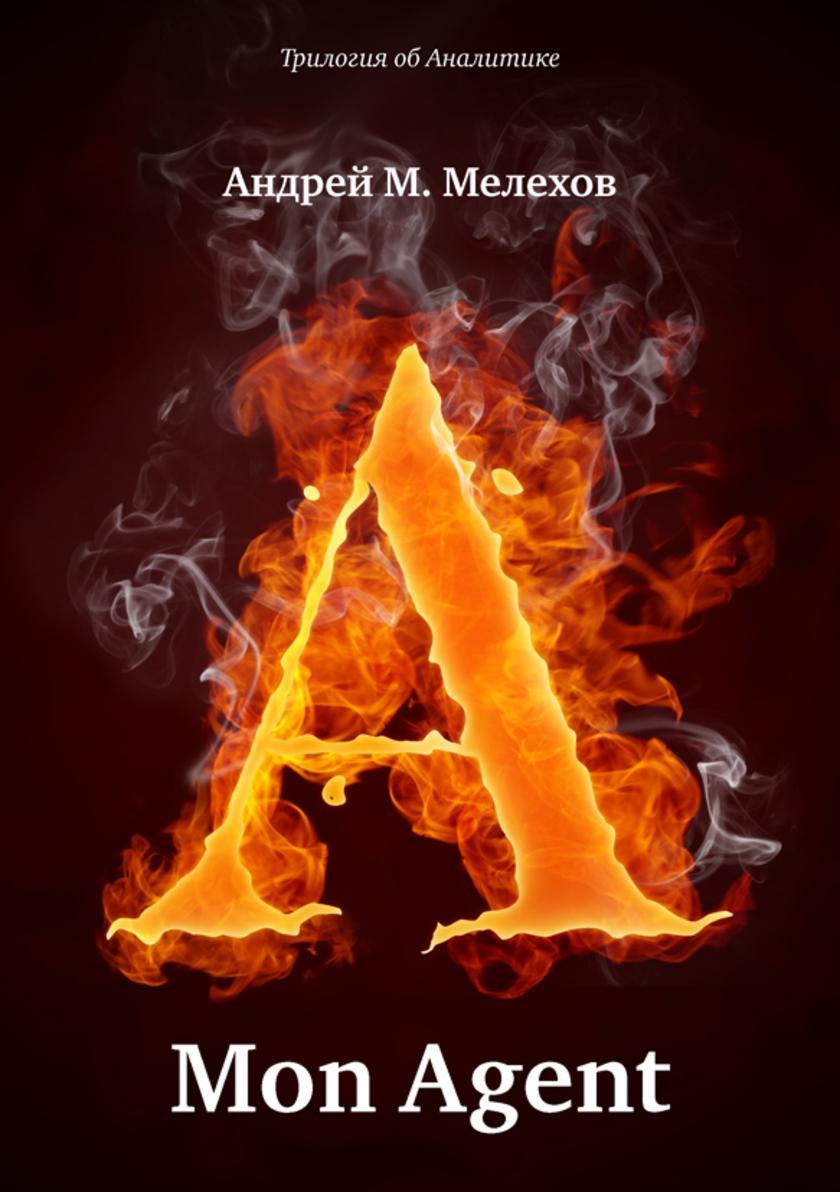
Mon Agent
¥11.77
Realmente, o estudo dos fluidos e das for?as radiantes leva, necessariamente, às formas invisíveis da vida, pois a elas se relaciona fortemente. E por aí que a Ciência nova chegará a reconhecer a existência do mundo dos espíritos e que as imensas perspectivas do Além se abrir abrir?o diante dela.'

Украшаем выпечку масляным кремомм
¥17.74
Tomasz Stawiszyński, filozof, publicysta zwi?zany mi?dzy innymi z ?Newsweekiem”, odwa?nie wylicza psychoterapeutyczne mity i pi?tnuje wielbion? bezkrytycznie psychologi?. Przekonuje, ?e wspó?czesna kultura i psychoterapia promuj? idea? cz?owieka, którego nie sposób zrealizowa? w praktyce. Tymczasem zdrady, depresja i chaos nie s? czym?, co trzeba zawsze pot?pia? i eliminowa?. Przeciwnie, odpowiednio zrozumiane czyni? ?ycie g??bszym i prawdziwszym, cho? niekoniecznie ?atwiejszym. A ?atwo?? ?ycia – któr? obiecuj? dzisiaj ró?ni terapeuci albo coachowie – to kolejny mit, bo d??enie do niej wzmacnia tylko problemy, jakich odruchowo chcemy si? pozby?. Ta fascynuj?ca ksi??ka przygl?da si? podejrzliwie zmitologizowanym prawdom psychologicznym, które przez ostatnie dekady dobrze nakr?ci?y nam w g?owie i zrobi?y wod? z mózgu. Tomasz Stawiszyński, filozof z talentem felietonisty, nie tylko ratuje nasz zdrowy rozs?dek, lecz tak?e prowadzi w kierunku szerszego, bardziej uniwersalnego rozumienia psychologii cz?owieka w uj?ciu Jamesa Hillmanna jako specyficznej wiedzy o otaczaj?cym nas dziwnym, skomplikowanym i wielopi?trowym ?wiecie. Dla wszystkich, którym nie wystarcza psychologiczna tradycja. Olga Tokarczuk Nie wierzcie – mówi Tomasz Stawiszyński – w sprowadzenie na ?wiat ?cz?owieka idealnego“. Nie wierzcie zw?aszcza wtedy, gdy wmawiaj? wam zewsz?d, ?e to wy nim mo?ecie zosta?, ?e macie w sobie tak? moc. A tymczasem to ideologiczna zmora, to potwór, który czyha na wasz? wolno??. prof. Zbigniew Miko?ejko, filozof religii, Instytut Filozofii i Socjologii PAN

Father Goriot
¥18.74
In 1861, Henry Dircks, a civil engineer, of London, published a work entitled "Perpetuum Mobile; or, Search for Self-Motive Power, During the Seventeenth, Eighteenth and Nineteenth Centuries." The book contains 599 pages, and was followed in 1870, by a second series by the same author entitled "Perpetuum Mobile, or a History of the Search for Self-Motive Power from the Thirteenth, to the Nineteenth Century." In these two books there is amassed a wonderful amount of material showing on the part of the author diligence, great patience and wide and thorough search.The author of these works was not enamoured of his subject, and his books clearly show that he was not writing them because of any interest he had in the subject of Perpetual Motion. On the contrary, they appear to have been written because of a deep detestation entertained by the author for the subject of Perpetual Motion, and a contemptuous pity for any one seriously interested in the subject. Mr. Dircks's works may be said to be the works of a scold. His sentiments were deep, and his impulses strong, which accounts for the vast amount of labor he did in the preparation of his books. Those books are now out of print, and it is believed by the author of this book that they may well remain so. They contain much material that no one would be justified in wading through. The most complicated mechanisms devised by enthusiastic dreamers are shown in the same detail with which the inventors described them in presenting them to the public, or to the patent offices. Little is to be gained by this. So complicated are many of the devices that only technically trained engineers could read them understandingly, and few technically trained engineers are now greatly interested in self-motive power devices. We believe that every useful or interesting purpose is served if enough devices are collected, classified and presented to show the various principles relied upon by the inventors; with an explanation of why they failed—i. e., wherein the principles relied upon are wrong, and while possibly not out of harmony with any mechanical principles then known, are entirely out of harmony with principles since discovered and now well known. In the preparation of this volume a vast amount of the information furnished by the two works of Mr. Dircks has been rearranged, reclassified, and used.Everyone who has to any extent, by environment, associated with the mass of people who are not technically educated, knows that the persons who are still interested in the subject of Perpetual Motion, and who still seek its attainment, are not technically trained engineers or mathematicians, but for the greater part untrained people of naturally strong mechanical sense, and of natural mechanical and mathematical adaptation.This book is written for the perusal of that large class of people. It is not designed as an argument either for or against the possibility of the attainment of Perpetual Motion. The author is content to classify and present—clearly, it is hoped—the leading endeavors that have been known in that field of effort, and to explain their failure. It is believed by the author that the perusal of the present volume by anyone whose mind has been attracted by the subject of Perpetual Motion will result in an enlightenment, and, it is also believed, will have a tendency to direct his mind from a struggle with theories long ago exploded, and may result in directing his efforts to things practical, and not without hope of attainment.This work is offered only to minds mechanically or mathematically inclined. It is not even hoped that it will interest people who prefer fiction to fact, nor people who read simply for idle entertainment. ABOUT AUTHOR: The author has no apology to offer for the production of this book. He has spent his life in environments that have brought him into constant contact with mechanics, artisans and laborers as well as professional men, engineers, chemists and technical experts of various types. He knows a great many men—young men, for the most part—are constantly working on the old, old problem of Perpetual Motion; that much money, and much time are being spent in search of a solution for that problem which all scientific and technical men tell us is impossible of solution.It is believed by the author that a classification and presentation of selected groups of the devices produced in the past by which it was by the inventor believed, self-motive power had been attained, will save much work in fields already thoroughly exploited.So far as the author knows no book on the subject has appeared since 1870. The various encyclopedias published contain articles on the subject, but they are necessarily brief, and not satisfying to young men who have become interested in the subject.
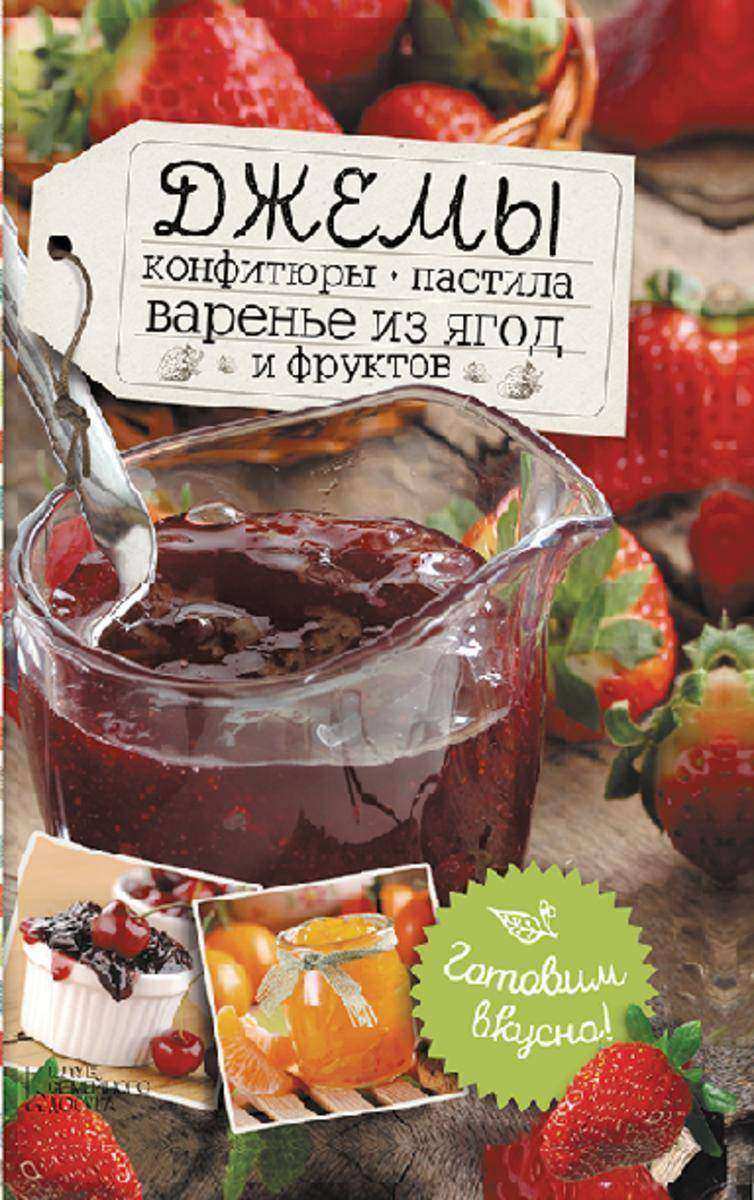
Джемы, конфитюры, пастила, варенье из ягод и фруктов.
¥17.74
П?д час роботи над книгою авторка побувала майже на вс?х континентах, в?дв?дала науков? бази в троп?ках Амазон?? ? на островах Великого бар’?рного рифу, сп?лкувалася з сотнями людей. Колберт шука? в?дпов?дь на питання, що станеться, якщо темпи вимирання прискоряться. Ця книга — не наукова праця. Вона — швидше велетенська стаття для природничого журналу з? св?товим ?м’ям, яку ми ма?мо можлив?сть читати укра?нською. Ел?забет Колберт у сво?й книз? н?кого не повча?. Зрештою, нав?ть не попереджа? про насл?дки нашого бездумного користування планетою. Вона — майстерна ? досв?дчена репортерка, яка простими словами розпов?да? про складн? реч?, в?д котрих залежить майбутн? нашо? планети ?, зрештою, людсько? цив?л?зац?? загалом.
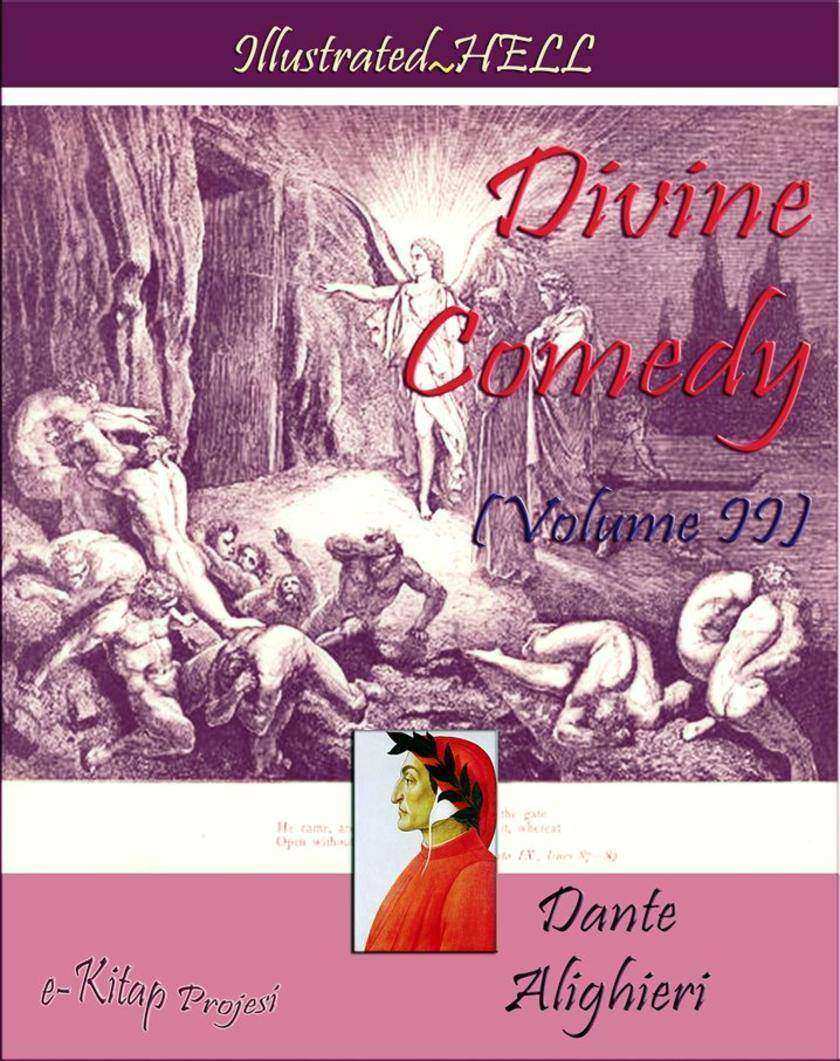
Divine Comedy (Volume II): Illustrated Hell
¥18.74
Micrographia is a historic book by Robert Hooke, detailing the then thirty-year-old Hooke's observations through various lenses. Published in September 1665, the first major publication of the Royal Society, it was the first scientific best-seller, inspiring a wide public interest in the new science of microscopy. It is also notable for coining the biological term cell. Observations: Hooke most famously describes a fly's eye and a plant cell (where he coined that term because plant cells, which are walled, reminded him of a monk's quarters). Known for its spectacular copperplate engravings of the miniature world, particularly its fold-out plates of insects, the text itself reinforces the tremendous power of the new microscope. The plates of insects fold out to be larger than the large folio itself, the engraving of the louse in particular folding out to four times the size of the book. Although the book is best known for demonstrating the power of the microscope, Micrographia also describes distant planetary bodies, the wave theory of light, the organic origin of fossils, and various other philosophical and scientific interests of its author. Publication: Published under the aegis of The Royal Society, the popularity of the book helped further the society's image and mission of being "the" scientifically progressive organization of London. Micrographia also focused attention on the miniature world, capturing the public's imagination in a radically new way. This impact is illustrated by Samuel Pepys' reaction upon completing the tome: "the most ingenious book that I ever read in my life." Hooke also selected several objects of human origin; among these objects were the jagged edge of a honed razor and the point of a needle, seeming blunt under the microscope. His goal may well have been as a way to contrast the flawed products of mankind with the perfection of nature (and hence, in the spirit of the times, of biblical creation). About Author: Robert Hooke (1635 – 1703) was an English natural philosopher, architect and polymath.His adult life comprised three distinct periods: as a scientific inquirer lacking money; achieving great wealth and standing through his reputation for hard work and scrupulous honesty following the great fire of 1666, but eventually becoming ill and party to jealous intellectual disputes. These issues may have contributed to his relative historical obscurity. He was at one time simultaneously the curator of experiments of the Royal Society and a member of its council, Gresham Professor of Geometry and a Surveyor to the City of London after the Great Fire of London, in which capacity he appears to have performed more than half of all the surveys after the fire. He was also an important architect of his time – though few of his buildings now survive and some of those are generally misattributed – and was instrumental in devising a set of planning controls for London whose influence remains today. Allan Chapman has characterised him as "England's Leonardo".Robert Gunther's Early Science in Oxford, a history of science in Oxford during the Protectorate, Restoration and Age of Enlightenment, devotes five of its fourteen volumes to Hooke.Hooke studied at Wadham College during the Protectorate where he became one of a tightly knit group of ardent Royalists led by John Wilkins. Here he was employed as an assistant to Thomas Willis and to Robert Boyle, for whom he built the vacuum pumps used in Boyle's gas law experiments. He built some of the earliest Gregorian telescopes and observed the rotations of Mars and Jupiter. In 1665 he inspired the use of microscopes for scientific exploration with his book, Micrographia. Based on his microscopic observations of fossils, Hooke was an early proponent of biological evolution. He investigated the phenomenon of refraction, deducing the wave theory of light, and was the first to suggest that matter expands when heated and that air is made of small particles separated by relatively large distances. He performed pioneering work in the field of surveying and map-making and was involved in the work, though his plan for London on a grid system was rejected in favour of rebuilding along the existing routes. He also came near to an experimental proof that gravity follows an inverse square law, and hypothesised that such a relation governs the motions of the planets, an idea which was subsequently developed by Newton.
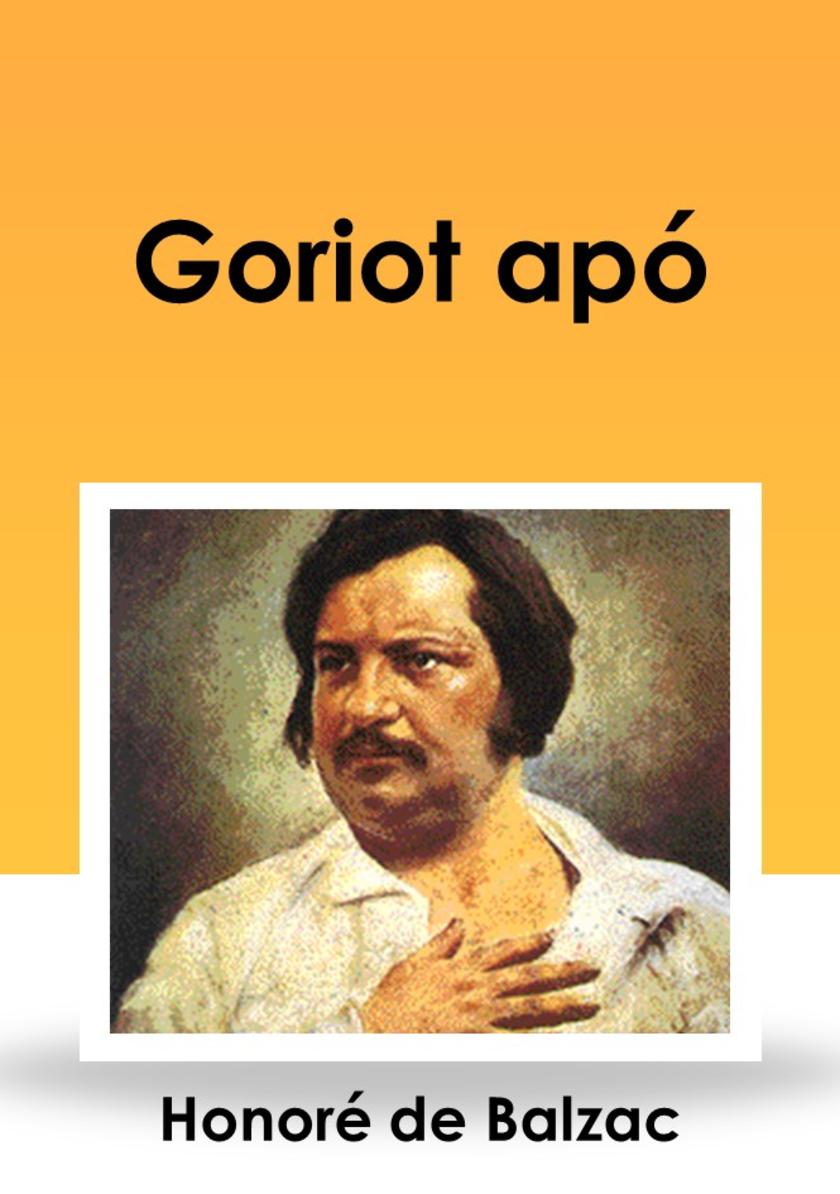
Goriot apó
¥8.67
These Essays, or rather Lectures, contain the first-fruits of the earliest systematic attempt to apply the theory of Evolution to the products of human handiwork. In their original form they have long been difficult to obtain; and they are reprinted now to supply the needs of candidates for the Oxford Diploma in Anthropology, and of the numerous visitors to the Pitt-Rivers Museum in Oxford. But they will certainly appeal to a far wider public also, as a brief and authentic statement of their author’s discoveries. The four Essays are reprinted substantially as they were first delivered and published. But verbal errors and actual misquotations have been corrected; and allusions to specimens or diagrams exhibited during the original discourses, but not published, have been replaced so far as possible by references to similar objects figured in the Plates. The Plates are photographic reproductions of the original illustrations, with the exception of Plates V, XIII, XVII, XVIII. Of these, Plate XIII has simply been re-drawn, from a faded original; Plates XVII and XVIII have been translated, without loss of detail, from colours to monochrome shading; Plate V has been reconstituted from illustrations quoted in the text, with the permission of their publisher, Mr. Murray. Plate XXI is reproduced, by permission of Sir John Evans, from the paper which it illustrated originally. The footnotes demand a word of explanation. The author, as the original publications show, was not precise in indicating his sources: he frequently gave, as a quotation, the general sense rather than the exact words of his authority; and occasionally his memory played him false. In the reprint, the precise references have been identified, and are given in full, and obvious errors in the text have been either amended or corrected in a footnote. The editor desires to acknowledge much valuable help in the search for references from Miss C. M. Prior, of Headington.

A kapitány
¥8.67
CURIOUS creatures of Animal Life have been objects of interest to mankind in all ages and countries; the universality of which may be traced to that feeling which "makes the whole world kin." The Egyptian records bear testimony to a familiarity not only with the forms of a multitude of wild animals, but with their habits and geographical distribution." The collections of living animals, now popularly known as Zoological Gardens, are of considerable antiquity. We read of such gardens in China as far back as 2,000 years; but they consisted chiefly of some favourite animals, such as stags, fish, and tortoises. The Greeks, under Pericles, introduced peacocks in large numbers from India. The Romans had their elephants; and the first giraffe in Rome, under C?sar, was as great an event in the history of zoological gardens at its time as the arrival in 1849 of the Hippopotamus was in London. The first zoological garden of which we have any detailed account is that in the reign of the Chinese Emperor, Wen Wang, founded by him about 1150 A.D., and named by him "The Park of Intelligence;" it contained mammalia, birds, fish, and amphibia. The zoological gardens of former times served their masters occasionally as hunting-grounds. This was constantly the case in Persia; and in Germany, so late as 1576, the Emperor Maximilian II. kept such a park for different animals near his castle, Neugebah, in which he frequently chased.Alexander the Great possessed his zoological gardens. We find from Pliny that Alexander had given orders to the keepers to send all the rare and curious animals which died in the gardens to Aristotle. Splendid must have been the zoological gardens which the Spaniards found connected with the Palace of Montezuma. The letters of Ferdinand Cortez and other writings of the time, as well as more recently "The History of the Indians," by Antonio Herrera, give most interesting and detailed accounts of the menagerie in Montezuma's park. The collections of animals exhibited at fairs have added little to Zoological information; but we may mention that Wombwell, one of the most noted of the showfolk, bought a pair of the first Boa Constrictors imported into England: for these he paid 75l., and in three weeks realised considerably more than that sum by their exhibition. At the time of his death, in 1850, Wombwell was possessed of three huge menageries, the cost of maintaining which averaged at least 35l. per day; and he used to estimate that, from mortality and disease, he had lost, from first to last, from 12,000l. to 15,000l. Our object in the following succession of sketches of the habits and eccentricities of the more striking animals, and their principal claims upon our attention, is to present, in narrative, their leading characteristics, and thus to secure a willing audience from old and young.
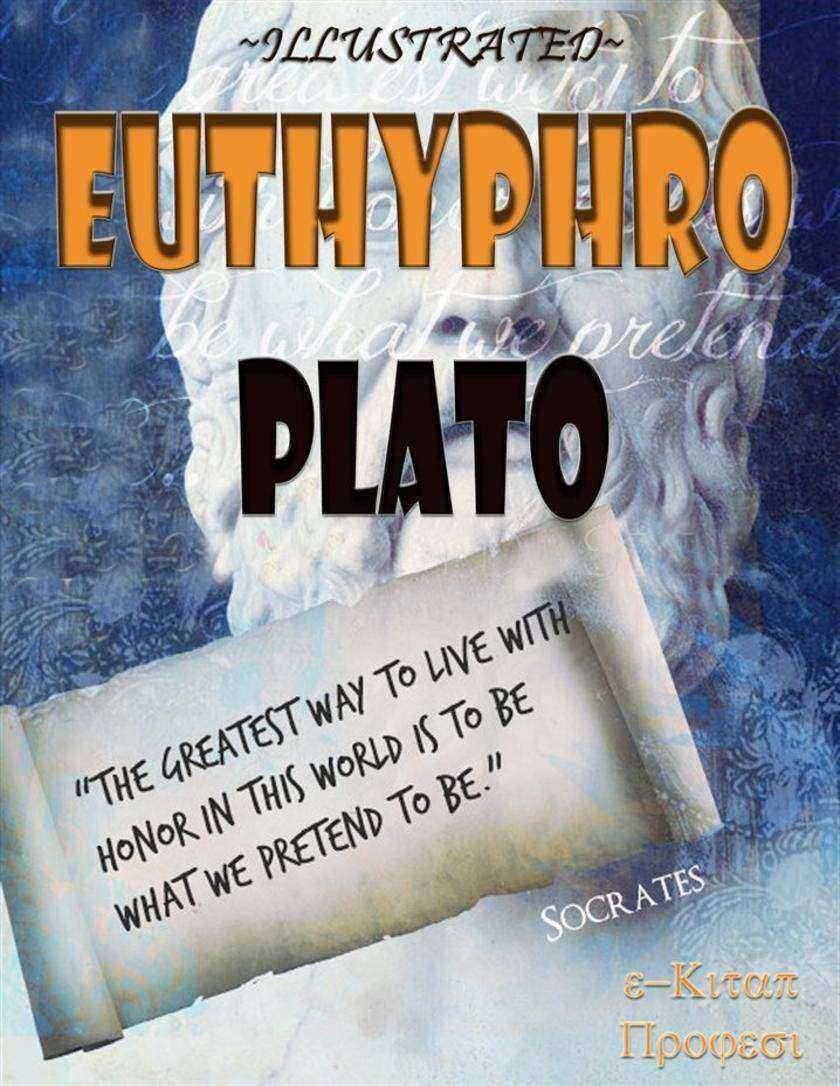
Euthyphro
¥9.24
On the Origin of Species, published on 24 November 1859, is a work of scientific literature by Charles Darwin which is considered to be the foundation of evolutionary biology. Its full title was On the Origin of Species by Means of Natural Selection, or the Preservation of Favoured Races in the Struggle for Life. For the sixth edition of 1872, the short title was changed to The Origin of Species. Darwin's book introduced the scientific theory that populations evolve over the course of generations through a process of natural selection. It presented a body of evidence that the diversity of life arose by common descent through a branching pattern of evolution. Darwin included evidence that he had gathered on the Beagle expedition in the 1830s and his subsequent findings from research, correspondence, and experimentation. Various evolutionary ideas had already been proposed to explain new findings in biology. There was growing support for such ideas among dissident anatomists and the general public, but during the first half of the 19th century the English scientific establishment was closely tied to the Church of England, while science was part of natural theology. Ideas about the transmutation of species were controversial as they conflicted with the beliefs that species were unchanging parts of a designed hierarchy and that humans were unique, unrelated to other animals. The political and theological implications were intensely debated, but transmutation was not accepted by the scientific mainstream. The book was written for non-specialist readers and attracted widespread interest upon its publication. As Darwin was an eminent scientist, his findings were taken seriously and the evidence he presented generated scientific, philosophical, and religious discussion. The debate over the book contributed to the campaign by T. H. Huxley and his fellow members of the X Club to secularise science by promoting scientific naturalism. Within two decades there was widespread scientific agreement that evolution, with a branching pattern of common descent, had occurred, but scientists were slow to give natural selection the significance that Darwin thought appropriate. During the "eclipse of Darwinism" from the 1880s to the 1930s, various other mechanisms of evolution were given more credit. With the development of the modern evolutionary synthesis in the 1930s and 1940s, Darwin's concept of evolutionary adaptation through natural selection became central to modern evolutionary theory, and it has now become the unifying concept of the life sciences. Summary of Darwin's theory: Darwin's theory of evolution is based on key facts and the inferences drawn from them, which biologist Ernst Mayr summarised as follows: ? Every species is fertile enough that if all offspring survived to reproduce the population would grow (fact).? Despite periodic fluctuations, populations remain roughly the same size (fact).? Resources such as food are limited and are relatively stable over time (fact).? A struggle for survival ensues (inference).? Individuals in a population vary significantly from one another (fact).? Much of this variation is inheritable (fact).? Individuals less suited to the environment are less likely to survive and less likely to reproduce; individuals more suited to the environment are more likely to survive and more likely to reproduce and leave their inheritable traits to future generations, which produces the process of natural selection (inference).? This slowly effected process results in populations changing to adapt to their environments, and ultimately, these variations accumulate over time to form new species (inference).
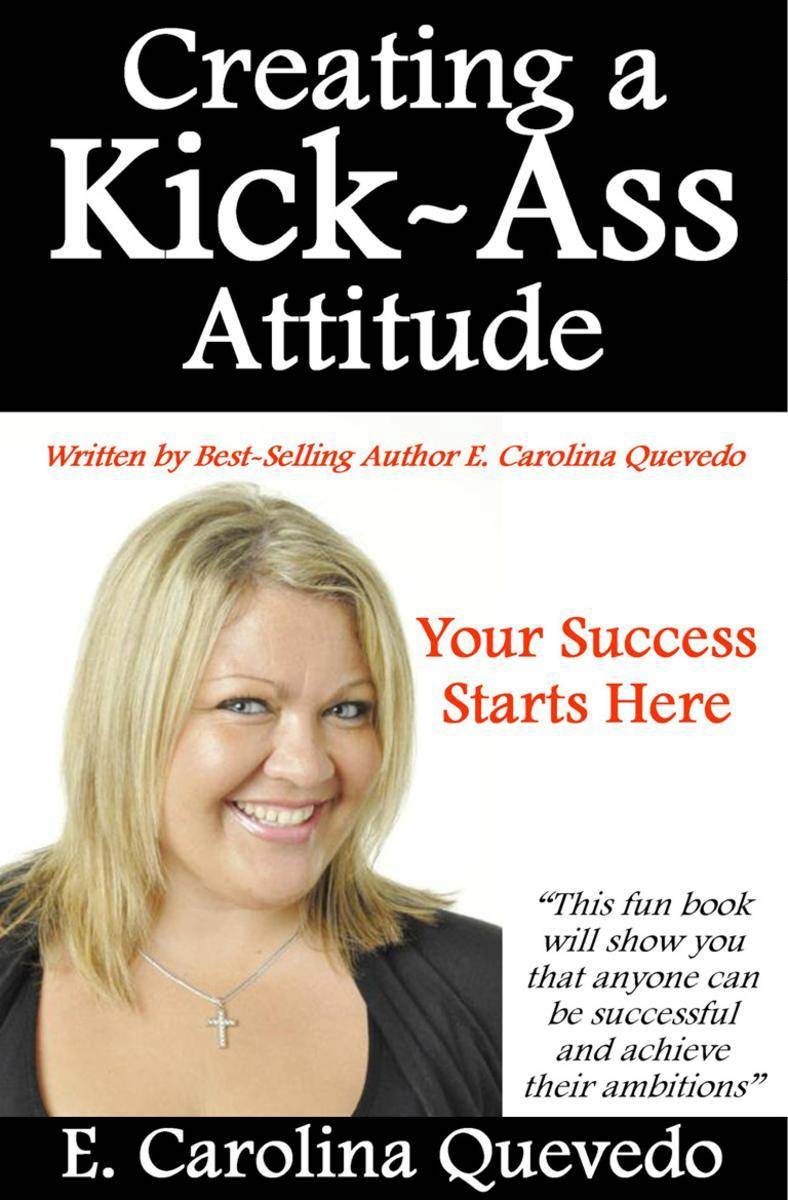
Creating a Kick Ass Attitude
¥39.14
Would you like to know how to develop a more positive attitude? Do you want to learn how to lead a happier life and fulfil your potential? Would you like to know what is stopping you from achieving your personal and professional goals? If you answered yes to any of these questions, Creating a Kick-Ass Attitude will show you how to change your way of thinking to become more successful. In this groundbreaking new book, life coach and entrepreneur E. Carolina Quevedo explains how you can improve your life for the better simply by changing your outlook. Based on her own experiences as an international speaker and motivator, E. Carolina teaches you how to get what you want by liberating your thoughts and changing the way you look at life. Improve your chances of success in everything you do with this must-have self-help guide. Written for a modern generation, this fun book will show you that anyone can be successful and achieve their ambitions, all it takes is the right attitude.
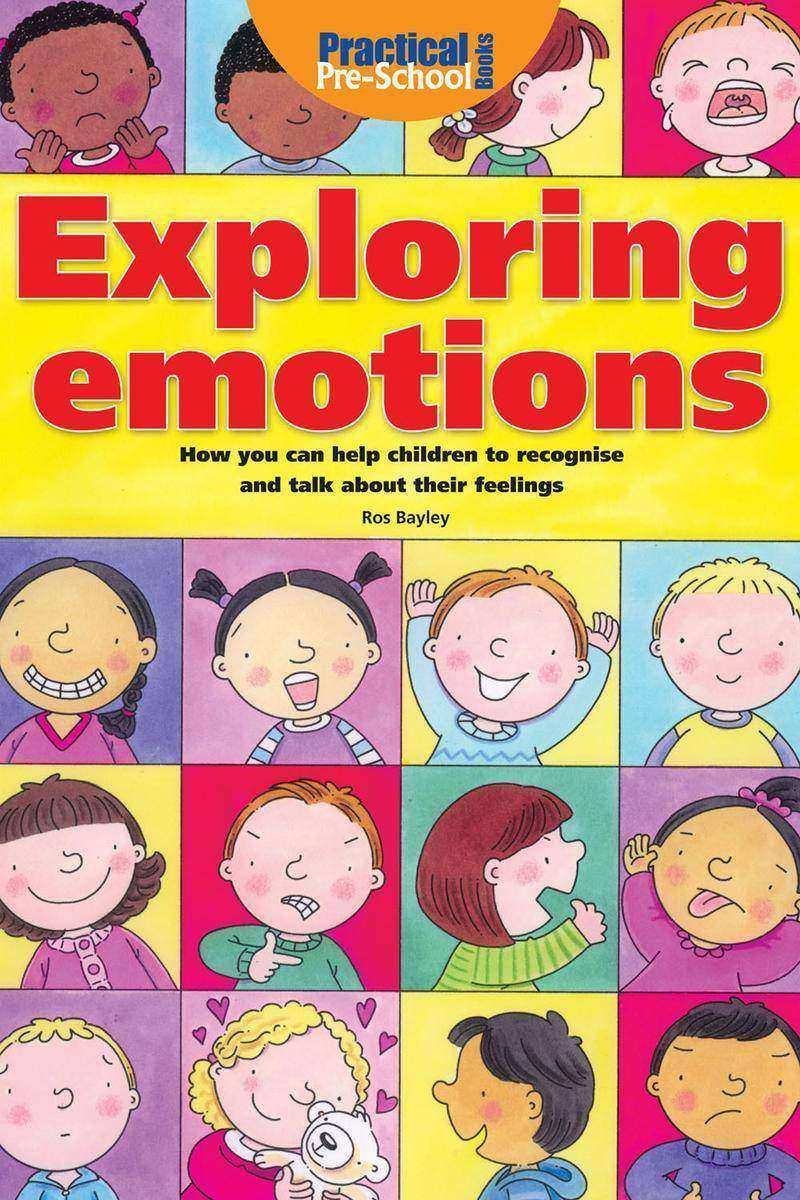
Exploring Emotions
¥73.48
This practical book from Ros Bayley is designed to enable every practitioner to help children manage their emotions. This title looks at the whole range of emotions that children feel and enable any practitioner to help children recognise these emotions and talk about them. Brimming with ideas for using puppets, toys, pictures, games and stories this is a must-have book for any practitioner looking to manage the emotions of children in their care.
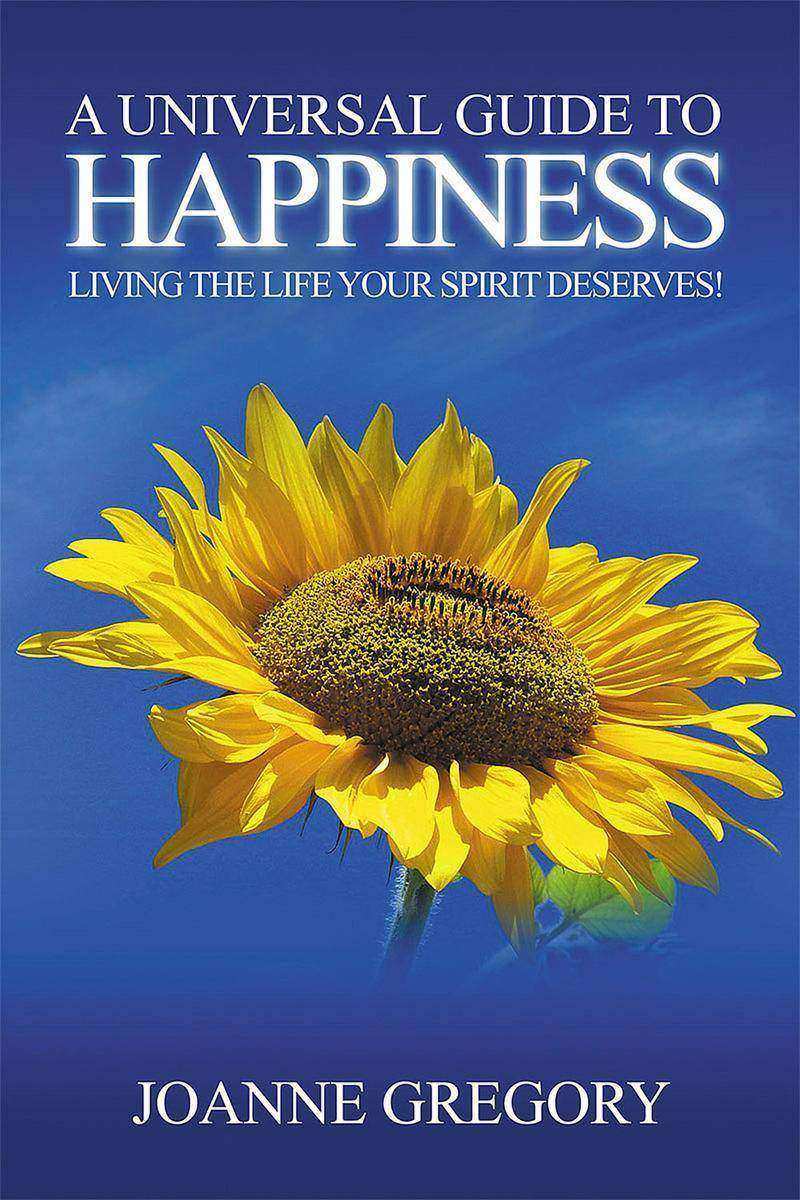
Universal Guide to Happiness
¥58.76
From affirmation to meditation, chakra to karma, this is the complete guide to belief and practice for those on the spiritual path, by an internationally acclaimed clairaudient medium with a celebrity contact list.

Just as You are
¥58.76
Just as You are is a Bible based personal resource which examines a selection of the parables of Jesus, from Luke's Gospel; looking at what it means to be loved unconditionally, valued for who we are, accepted and part of God's eternal plan. Just as You are is an interactive resource, encouraging personal involvement and a positive response to Bible study. In addition, suggestions are made for prayer.




 购物车
购物车 个人中心
个人中心



